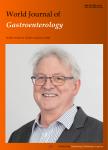Endoscopic ultrasound guided fine needle aspiration and useful ancillary methods
Endoscopic ultrasound guided fine needle aspiration and useful ancillary methods作者机构:Department of GastroenterologyDubrava University Hospital Zagreb University of Zagreb Faculty of Pharmacy and Biochemistry 10040 Zagreb Croatia Department of Pathology and CytologyDubrava University Hospital Zagreb 10040 Zagreb Croatia Division of molecular diagnostics and geneticsDubrava University Hospital ZagrebUniversity of ZagrebSchool of Medicine 10040 Zagreb Croatia
出 版 物:《World Journal of Gastroenterology》 (世界胃肠病学杂志(英文版))
年 卷 期:2014年第20卷第39期
页 面:14292-14300页
核心收录:
学科分类:0831[工学-生物医学工程(可授工学、理学、医学学位)] 100207[医学-影像医学与核医学] 1002[医学-临床医学] 08[工学] 1010[医学-医学技术(可授医学、理学学位)] 10[医学]
主 题:Endoscopic ultrasound Endoscopic ultrasound-guided fine needle aspiration Endoscopic ultrasound-guided tissue acquisition Fine needle aspiration cytology Ancillary studies Molecular testing Flow cytometry immunophenotyping
摘 要:The role of endoscopic ultrasound(EUS) in evaluating pancreatic pathology has been well documented from the beginning of its clinical use. High spatial resolution and the close proximity to the evaluated organs within the mediastinum and abdominal cavity allow detection of small focal lesions and precise tissue acquisition from suspected lesions within the reach of this method. Fine needle aspiration(FNA) is considered of additional value to EUS and is performed to obtain tissue diagnosis. Tissue acquisition from suspected lesions for cytological or histological analysis allows, not only the differentiation between malignant and non-malignant lesions, but, in most cases, also the accurate distinction between the various types of malignant lesions. It is well documented that the best results are achieved only if an adequate sample is obtained for further analysis, if the material is processed in an appropriate way, and if adequate ancillary methods are performed. This is a multi-step process and could be quite a challenge in some cases. In this article, we discuss the technical aspects of tissue acquisition by EUS-guided-FNA(EUS-FNA), as well as the role of an on-site cytopathologist, various means of specimen processing, and the selection of the appropriate ancillary method for providing an accurate tissue diagnosis and maximizing the yield of this method. The main goal of this review is to alert endosonographers, not only to the different possibilities of tissue acquisition, namely EUS-FNA, but also to bring to their attention the importance of proper sample processing in the evaluation of various lesions in the gastrointestinal tract and other accessible organs. All aspects of tissue acquisition(needles, suction, use of stylet, complications, etc.) have been well discussed lately. Adequate tissue samples enable comprehensive diagnoses, which answer the main clinical questions, thus enabling targeted therapy.



